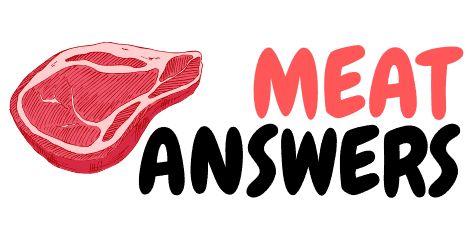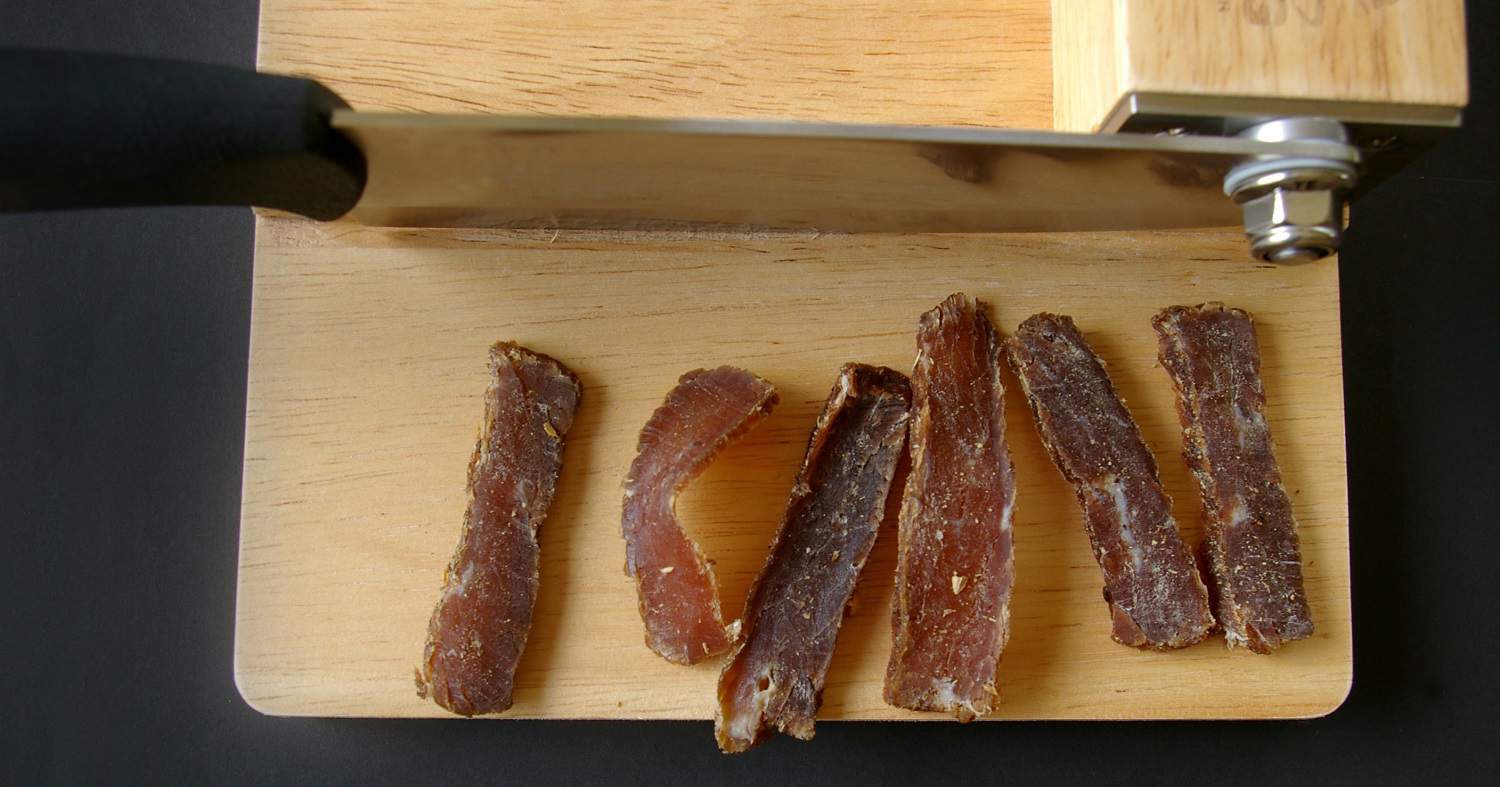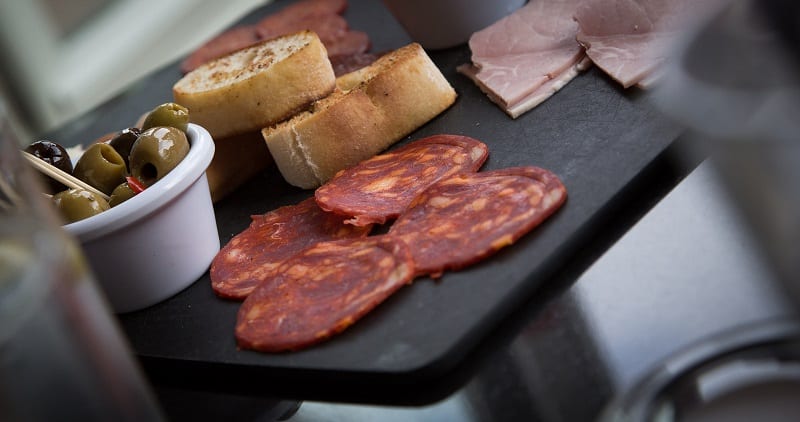Steak is steak. When prepared properly, it is tough to beat! But what goes into making that perfectly prepared piece of beef? Well, did you know that equally as important as a great cooking technique, the best steaks you’ve ever had were probably great because of the way they had been sliced?

And, as almost every cookbook or professional chef will tell you, slicing against the grain, is key to getting that last element of perfection before you put the meat in your mouth.
Let’s start with why meat should be sliced against the grain. You have probably seen this recommended in various recipes or even on popular cooking shows in the past. The reason for cutting meat this way is to make the meat more tender.
It’s also common to be told that when slicing meat, “it’s all about the angle.” That’s great, but if you’re totally new to this subject, then that probably means nothing to you at the moment.
So, let’s start with a few basic concepts. What exactly is the grain of the meat? And, why is it so essential to slice beef against the grain?
Table of Contents
What Is The Grain Of The Meat?
Mainly, the grain of the meat refers to the direction that the muscle fibers align in each given piece. With some cuts of meat, this is very easy to identify. A good example is flank steak. Flank steak often comes with well-defined lines running across the surface of the meat, so when slicing against the grain, all you have to do is look at those lines and cut against them.
You can think of this as a sort of graph. The meat will give you a set of horizontal lines that you will need to position parallel to yourself. Then you will slice against those to create the vertical lines in the graph. Your lines will slice through the entire cut of meat, leaving those horizontal lines running up through your slices from top to bottom.
Different Cuts of Meat, Different Techniques
Pay attention, though, because there are cuts of meat – like skirt steak – which are somewhat counter-intuitive when compared to the example we just covered. Instinctively, with a long strip of skirt steak, we’ll often want to start cutting from end to end. However, the way strips of skirt steak are usually portioned out at the butcher is in a long strip.
So, to get the smaller strips for meals, you’ll likely default to cutting the pieces into smaller strips along the length. But, the proper way to slice it at home would be to cut your strips along the full length of the meat. This will get you pieces that have the lines running up and down them, maximizing the juiciness of the meat. In order to make this more manageable, with a longer cut like skirt steak, a simple trick is to cut the long strip down the center – into two even pieces – then rotate the meat so that the grain is parallel to you and cut your slices from there.
Some meats are more complicated than others when it comes to identifying the grain because they have fibers running in all directions. In cases like this, you have to “read the meat” to determine which direction you think is going to work best to achieve that perfect level of tenderness.
One way to do this is to cut a small slice (or a tip) off the end of the piece of meat. If you notice that the part has long stringy sections running from end to end (instead of top to bottom), then your cutting with the grain. Just rotate the meat 90 degrees and cut from top to bottom. That should get you the against the grain slices that you’re looking for!
Finally, with some pieces of meat, like sirloin, you will find that the cuts that come from the store are segmented with separations of muscle between the different sections. To ensure that you’re getting the most out of these, you should first separate the segments by cutting through the thicker white muscle lines. Once you have all of the sections separated, you can then cut each part against their respective grains.
Why Is It Important To Cut Against The Grain?
Simply put, your meat will be more tender if you cut against the grain. By slicing the muscles down, you shorten the fibers, reducing the amount of work you’ll need to put in to chew through the meat.
 It is a commonly held belief that there is a hierarchical system when it comes to beef. A filet is better than a sirloin, which is better than a flank steak. But this doesn’t necessarily have to be the case. Yes, it’s true – a filet mignon is inherently more tender. But this just means that it has less marbling, making it easier to slice through. However, with less marbling, you will typically also find less flavor.
It is a commonly held belief that there is a hierarchical system when it comes to beef. A filet is better than a sirloin, which is better than a flank steak. But this doesn’t necessarily have to be the case. Yes, it’s true – a filet mignon is inherently more tender. But this just means that it has less marbling, making it easier to slice through. However, with less marbling, you will typically also find less flavor.
Your most flavorful steaks are going to come from cuts like ribeyes – this is because they have tons of fat marbling throughout the meat. So, if you like a lot of flavor, some of these cuts that have more marbling may be your thing. However, if cut incorrectly, it can be really tough to chew through the meat with the combination of fat marbling and muscle grains that have not been broken down properly. And if you’ve ever had a super chewy steak, the cut is probably where your chef went wrong.
When Is The Best Time To Slice the Meat?
What type of cut you are working with, and which kind of dish you are preparing is going to determine when you’ll need to actually cut the meat.
For instance, if you ware making a stew or stir fry, and you will be cubing your meat into bite-sized pieces, you should cut it while still raw. It’s harder to determine the grain in this case because without cooking it, the meat doesn’t come apart easily to indicate whether the lines are horizontal or vertical throughout the slices. And, we often use lower quality cuts for these types of dishes, which are usually more challenging to locate the grain in.
For large pieces that are cut up for slow-cooking (like brisket), the lines are usually pretty clear. These are often cut raw, then slow-cooked in long, large slabs, ultimately leaving you with meat that doesn’t require a knife to cut through.
And if you are grilling full-sized pieces of meat, then you will want to cook them to the desired temperature, then let them rest before slicing. The reason for this is because when the meat is raw, it is 70-75% water. When cooked, the water in the muscle fibers moves towards the center of the meat. If you cut it fresh off the grill, all of that liquid will release, leaving all of the juiciness on your plate, instead of inside your bites of meat. So, the best method is to let your grilled meat sit prior to cutting it against the grain. This will ensure you get the juiciest, most tender bites possible.
Conclusion
Any cut of meat can taste like a million bucks – you just have to know how to prepare and serve it to get it there. Whether you opt to marinate, season, roast, smoke, sous vide, grill, or pan-fry – all of your efforts will be lost if the technique used to cut the meat isn’t correct.
Getting those perfect against the grain slices to ensure your bites are tender and easy to chew is the icing on the cake when it comes to creating the perfect dish!
So, keep an eye out for those lines of muscle in your next hunk of meat and slice those babies down to get the ultimate tenderness and flavor. Bon appétit!




